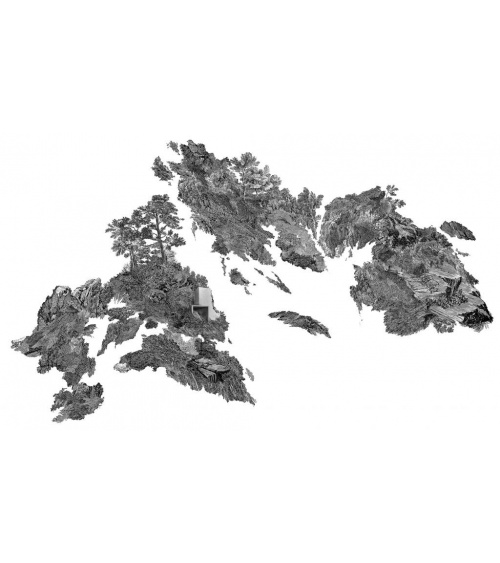Claire Trotignon - Cold Hill Side
Cold Hill Side, an expression taken from the poem La Belle Dame sans merci, is a series of three silkscreens created by Claire Trotignon.
Cold Hill Side, an expression taken from the poem La Belle Dame sans merci, is a series of three silkscreens created by Claire Trotignon.
Claire Trotignon was born in 1985 in Paris, where she lives and works.
She graduated with honours from the École supérieure des beaux-arts in Tours in 2008, and has become one of the most talented artists of her generation. All her work revolves around a questioning of codes that drive our reality. Through her huge installations and series of drawings, collages, photographs, she holds to this practice of shaking up the ‘here and now’.
She collects fragments of antique prints and reconstructs fictional, almost heroic landscapes. Working from a hodgepodge of different scales, she interposes fragments of modernist architecture, reactivating the ambiguities unique to our culture. She offers to our view an almost idyllic landscape, floating freely in space. Modernists, in their beyond-the-human trappings, remain a destructive force, a reflection of ruin.
But once the modernists are removed by the new order of hyper-capitalism, what happens then? How should we consider our part in the world when all the signs show the imminence of their replacement? It is this colossal challenge that Claire Trotignon tries to respond to. The utopian buildings she peoples with her representations teach the process of a form of idealism that modern capitalism uses to hold us to its mercantile purposes. So we have to see a kind of re-enchantment with the visible in these works. With exceptional delicacy, Claire Trotignon indicates to us that the image may still be, not the sum of its ordinary places, but the place of the ordinary.
Data sheet
- Size
- 75 x 105 cm
- Edition
- 8 copies
- Technique
- Original serigraphies
Trotignon (Claire)
The artist was born in 1985 in Paris, where she lives and works. She graduated with honours from the École supérieure des beaux-arts in Tours in 2008, and has become one of the most talented artists of her generation.
The practice of collage in Claire Trotignon's work should be seen as a successful attempt to talk about our time, to talk about it in a different way. There is in her work a happy collision between elements belonging to the past and forms visibly coming from the future. Nothing in her works seems to speak of our present or even to refer to any events or mutations in our culture. She composes each of her landscapes from hundreds of fragments of 19th century engravings, which she cuts out meticulously before gluing, arranging and distributing them sparsely on an immaculate white background. Their assemblages shape rocky outcrops that take the form of mountains, cliffs, or are reduced to a few elements denoting a place with no precise location. And always, a tree, or even a grove, comes to fix the ladder. Around the infinite, the void, so present in this white that radiates while leaving things unsettled. In Claire Trotignon's work, emptiness is the very basis of the composition and refutes all forms of gravity. Things float freely, excluding any clearly defined horizon or even a constraining vanishing line. The frame therefore appears as an arbitrary cut-out.
Like real traps for the gaze, these collages are populated with architecture, or more precisely with the ghosts of constructions. From series to series, they have become more abstract to the point of being embodied just as much in the archaic structures of ancient peoples or taking on the minimalist evidence of utopian architectures, which they regularly adorn with touches of intense blue applied with a brush. These arches, these blind walls, these pits and esplanades, these endless perspectives evoke a levitating future world where reality seems to have lost all substance, scattered in the folds of time and therefore of our imagination. Claire Trotignon reaffirms that any landscape, especially an urban one, is above all a mental construction in which the stakes of representation in a given culture crystallise. By playing with the idea of history, of cycles, by calling upon non-Western modes of representation (one thinks in particular of Japanese prints), her collages ultimately produce an image where the past and the future seem to cancel each other out in the ruins of the present. For the landscapes that Claire Trotignon composes are obviously metaphorical and also refer to this break-up of our contemporary cultures.
No customer reviews for the moment.





